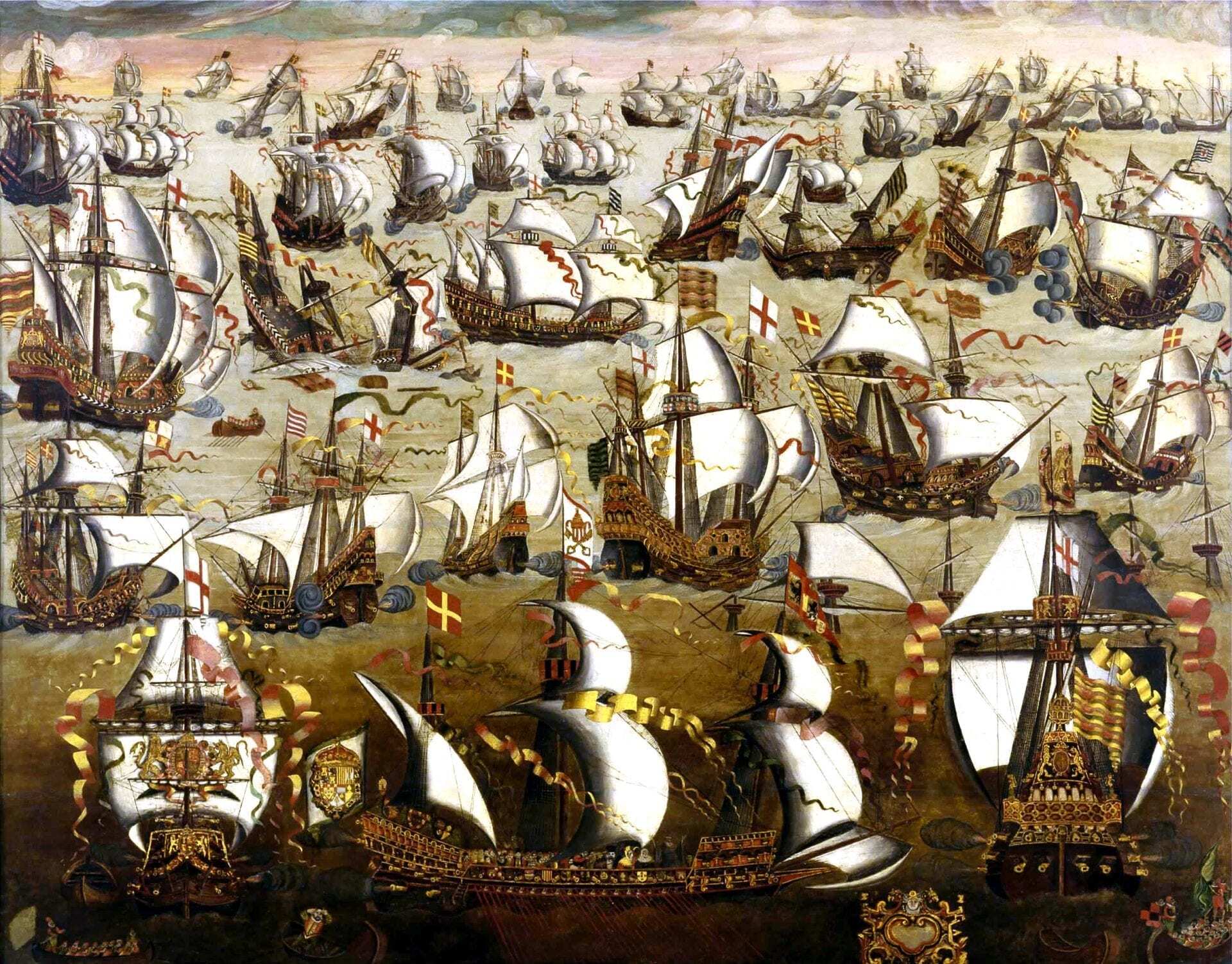The cold waters of the Atlantic off the Coast of Ireland have divulged one of its many secrets that might help to cast light on one of the major events of both Irish and British history, the defeat of the Spanish Armada
In a dive survey conducted last year by the Underwater Archaeology Unit of the Irish Department’s National Monuments Service, cannon balls, a variety of artifacts and pieces of pottery were discovered on a wreck off the Donegal coast. From the evidence uncovered so for, it indicates that the wreck was likely to be 16th-century ship and possibly part of the 1588 Spanish Armada. However, conclusive identification of the two wrecks outside Burtonport harbour may take some time, Connie Kelleher of the Department of Arts, Heritage and the Gaeltacht’s underwater archaeology unit, said yesterday.
The Spanish Armada was the fleet that sailed against England under the command of the Duke of Medina Sidonia in 1588, with the intention of overthrowing Elizabeth I of England to stop English involvement in the Spanish Netherlands and English privateering in the Atlantic and the Pacific.
Due to the unique nature of the wreck the Irish Government has provided £50,000 to fund further research on the site. Jimmy Deenihan TD, Minister for Arts, Heritage and the Gaeltacht in a statement to Heritage Daily said
“I am delighted to be able to support investigations into a major find of significance not only to Ireland but also to the international archaeological, historical and maritime communities. If, in fact, it proves to be an Armada vessel, it could constitute one of the most intact of these wrecks discovered to date. It could provide huge insight into life on board and the reality of the military and naval resources available to the Armada campaign”
The location of the wreck in relatively shallow water will gives the Archaeology team better than usual access to the vessel itself and to any artefacts that may still be on board. The archaeologists who are currently working on the Rutland Island wreck near Burtonport in Co Donegal believe they might discover further items which cast further light on the circumstance on who and what the wreck is.
At least 24 Spanish warships sank off the west coast in September 1588 when they were caught in violent storms. They were wrecked in locations between Antrim and Kerry as they attempted to make their way back home following defeat to a British fleet in the English Channel.
“It’s certainly from the right period,” underwater archaeologist Connie Kelleher said of the vessel she was working on yesterday.
The vessel is 20 meters long and much of the wooden hull is still intact, allowing divers to make their way inside the hold.
In a further development Heritage daily has learnt that a second wreck has also been discovered and is believed to date to the 18th century. This later wreck, could possibly be French, and might be linked to Napper Tandy’s revolutionary efforts. Tandy (1740-1803), who worked with Wolfe Tone in founding the United Irishmen, accepted a French government offer of a corvette, the Anacreon, and sailed from Dunkirk with United Irishmen and arms, arriving on Arranmore island, close to Burtonport, in September 1798.
However, locals were said to be less than supportive of his aims and were afraid of the retribution from the Crown forces. In addition Tandy also learned that Gen Humbert’s expedition had been defeated in Mayo. Nevertheless, he took possession of Rutland, hoisted an Irish flag, and issued a proclamation before leaving and sailing north.
At this stage, identification of this wreck is uncertain, but Ms Kelleher believes it may be “enormously significant”.
Header Image – English ships and the Spanish Armada, August 1588.







